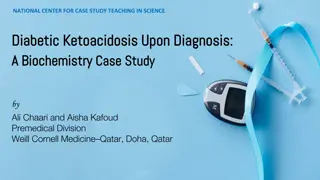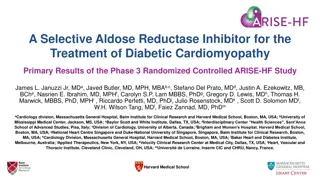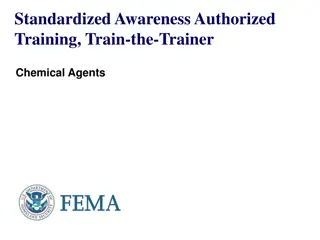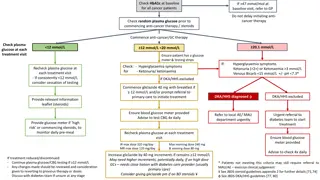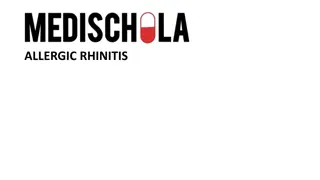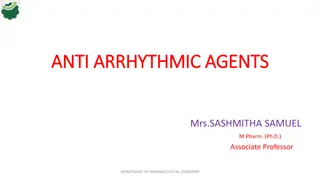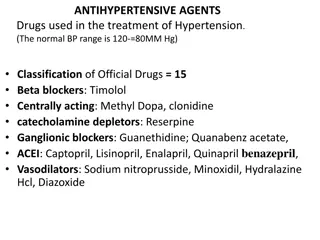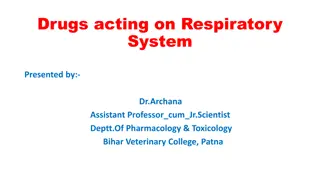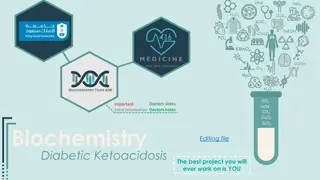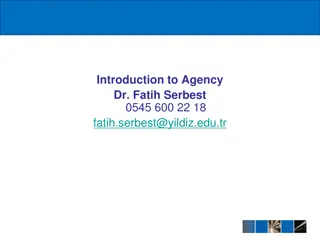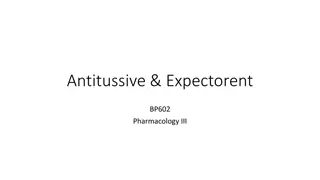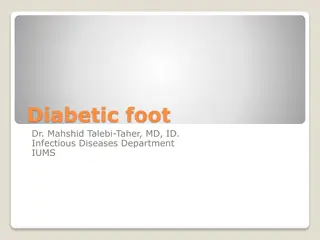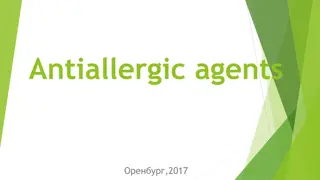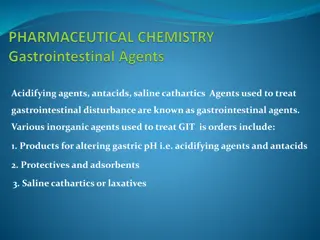Antiviral, Antitussives, Allergic Agents, and Anti-diabetic Drugs
Antiviral drugs target specific viruses, while antitussives suppress coughing. Allergic agents treat allergic reactions, and anti-diabetic drugs alter glucose levels in diabetes. Examples include amantadine for influenza, codeine for cough, and sulfonylureas for diabetes. These medications play crucial roles in managing viral infections, cough, allergies, and diabetes effectively.
Download Presentation

Please find below an Image/Link to download the presentation.
The content on the website is provided AS IS for your information and personal use only. It may not be sold, licensed, or shared on other websites without obtaining consent from the author.If you encounter any issues during the download, it is possible that the publisher has removed the file from their server.
You are allowed to download the files provided on this website for personal or commercial use, subject to the condition that they are used lawfully. All files are the property of their respective owners.
The content on the website is provided AS IS for your information and personal use only. It may not be sold, licensed, or shared on other websites without obtaining consent from the author.
E N D
Presentation Transcript
Antiviral drugs are a class of medication used for treating viral infections. Most antivirals target specific viruses, while a broad-spectrum antiviral is effective against a wide range of viruses. For example, amantadine (Symmetrel) is a synthetic antiviral. It acts by inhibiting the multiplication of the influenza A virus. It was used to lessen the severity of the disease, particularly in individuals at high-risk such as those who are immunosuppressed or in a Amantadine has been medicines, oseltamivir (Tamiflu) and zanamivir (Relenza) which have fewer side effects. Ribavirin , and tetanus (DTaP), measles, mumps, rubella (MMR), varicel la (chickenpox), hepatitis nursing by home. safer replaced diphtheria, pertussis, B, rotavirus, polio
Antitussives are medicines that suppress coughing, also known as cough suppressants. Antitussives are thought to work by inhibiting a coordinating region for coughing located in the brain stem, disrupting the cough reflex arc; although the exact mechanism of action is unknown. DRUG Codeine DRUG DESCRIPTION An opioid analgesic used to treat moderate to severe pain when the use of an opioid is indicated. An NMDA receptor antagonist used to treat cases of dry cough. An opioid agonist used as an analgesic and antitussive agent. An opioid analgesic indicated for management of severe pain that is not responsive to alternative treatments. Also used to aid in detoxification and maintenance treatment of opioid addiction. Dextromethorphan Hydrocodone Methadone
Anti-Allergic Agents that are used to treat allergic reactions. Most of these drugs act by preventing the release of inflammatory mediators or inhibiting the actions of released mediators on their target cells. DRUG Triprolidi ne DRUG DESCRIPTION A sedating antihistamine combined with pseudoephedrine and guaifenesin in various types of cold and allergy medications to relieve allergy symptoms, hay fever and common cold symptoms, and to aid in sleep. A histamine H1 antagonist used to treat hypersensitivity reactions, coughs, and the common cold. Tripelenn amine Tranilast For the treatment of bronchial asthma, keloid and hypertrophic scar, and allergic disorders such as asthma, allergic rhinitis and atopic dermatitis.
Anti-diabetic Drugs used in diabetes treat diabetes mellitus by altering the glucose level in the blood. With the exceptions of insulin, exenatide, liraglutide and pramlintide, all are administered orally and are thus also called oral hypoglycemic agents or oral antihyperglycemic agents. Sulfonylureas Insulin secretion can be stimulated with sulfonylureas (SU) or meglitinides, of which the first ones are the longer acting ones, and the meglitinides the prandial insulin releasers. These agents stimulate insulin secretion by acting on the K+ ATP channel on the surface of the pancreatic -cell. They induce weight gain and confer a risk of hypoglycemia
Insulin If glycemic control cannot be achieved with each or all of the agents mentioned above, insulin therapy can be given. Insulin affects many of the defects in T2DM; it lowers hepatic glucose production, increases glucose uptake in the muscle, lowers lipolysis from adipose tissue, enhances protein anabolism and affects growth. Anti hypertensives There are many classes of antihypertensives, which lower blood pressure by different means. Among the most important and most widely used medications are thiazide diuretics, calcium channel blockers, ACE inhibitors, angiotensin II receptor antagonists (ARBs), and beta blockers.
Anti-Epilepsy Epilepsy causes your brain to send abnormal signals. This activity can lead to seizures. Seizures can occur for a number of reasons, such as injury or sickness. Epilepsy is a condition that causes recurrent seizures. There are several types of epileptic seizures. Many of them can be treated with antiseizure medications.


